|
Large showy trilliums are found in the moister, shadier lower lying areas of Leaning Oaks. Trillium ovatum are found nestled among the willows and below the cedars. The flowers change to pale pink as they age and when I was first on the coast I was convinced that they had to be two different species. The seeds are attractive to ants which will drag them back to their nests for the larvae to feed on and thus effectively dispersing the plants.
0 Comments
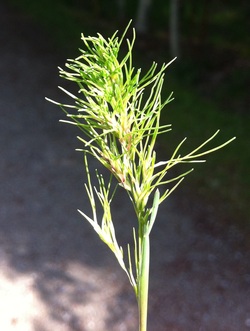 Bulbous Bluegrass (Poa bulbosa ssp. vivipara) is an introduced grass that grows in disturbed areas and dry places. Its a very distinctive grass because, instead of producing flowers and seeds like grasses usually do, the inflorence produce small bulbs which start to grow on the flowering head. As the summer approaches, this grass usually dries up, and the bulbs fall off and loose their leaves, but are able to resprout with autumn rains. This species has had an interesting history. First used in the west as an agricultural crop it was promoted as a weed control in alfalfa fields, where this grass could outcompete other species. Now it in itself is regarded as a weed in some parts of western North America. 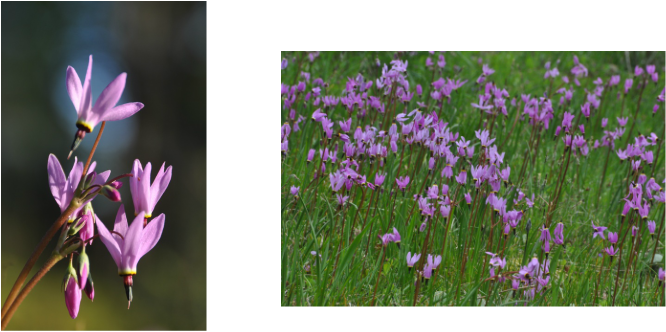 The shootingstars form thick, patchy mats around the property. The flowers range from deep, deep purple to the odd white one. We transplanted a few plants from areas where they were growing thickly and not flowering (deep shade) to the lawn and these have spread to thick clumps in just a few years. Another English name for Dodecatheon hendersonii is "mosquito bill" which aptly describes the shape of the flower with it's strongly reflex petals exposing the pointy corolla. The round to oval leaves form a basal rosette. D. hendersonii is found on the west coast of North America from southern Vancouver Island to California in areas with moist winters and dry summers. 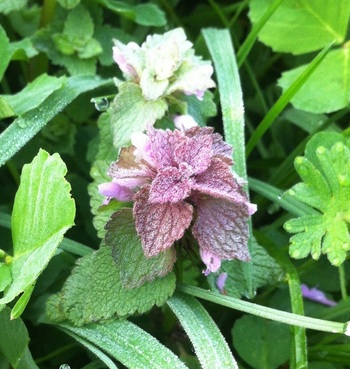 Purple Dead-Nettle is a distinctive introduced species that is frequently found in disturbed places and lawns on southern Vancouver Island. At Leaning Oaks it varies from year to year how much of this we have, and it is a common weed in our garden. The purple leaves on the flowering shoots are showier than the flowers themselves, and nearly the same colour. Lamium purpureum var. purpureum is in the same genus as Yellow Archangel (32.) and since both are weeds here, I must admit that its has discouraged me from using other species of Lamium in the garden. This species is usually an annual or biennial plant. They produce huge quantities of small seeds, in the hundreds or thousands. Irrigated, they continue to bloom well into the summer or fall. "Dead"-nettle refers to the fact that the species superficially looks like stinging nettle, but is "dead" or stingless. 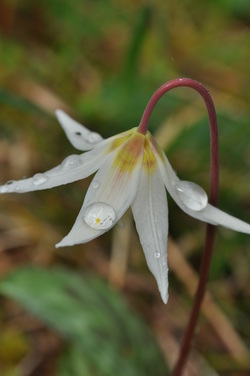 The white fawn lilies congregate in moist, well drained soils; going for dappled sunlight (or is it dappled shade?) Erythronium oregonum glow and offer a counterpoint to the shooting stars that come up just a bit later in the waves of colour that sweep Leaning Oaks in the spring. The deer are very good at nipping off the buds; which reminds me of a line I overheard in a nursery; "I want to grow native plants so that the deer won't eat them". Huh? The overlooked part of the lily is the patterns on the basal, lanceolate pair of leaves. They are a bit like the distinctive patterns on a giraffe; if lilies migrated, you could track individuals. 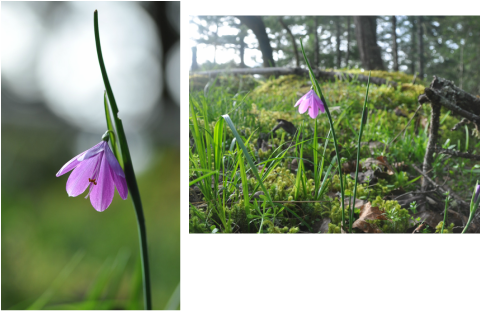 I thought I knew where all of the Olsynium douglasii were on Leaning Oaks - but tonight I found a new small group shimmering in the evening sun and swaying seductively in the breeze. Satinflowers are one of the earlier blooming flowers along the edges of the meadows, often showing in March. Douglas' blue-eyed grass is another common name. This member of the iris family just gets into Canada on southern Vancouver Island. 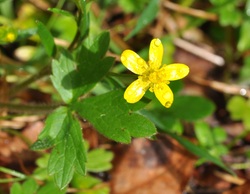 A bright ray of sunshine, Ranunculus occidentalis is one of the earlier flowering plants along the forest edge and in the meadow at Leaning Oaks. Western buttercups have variable numbers of petals and there are seven recognized varieties in western North America. There are up to 14 petals according to EFlora and eight in Pojar and MacKinnon. (Plants of Coastal BC) Yahoo-there are some flowers out in the meadow! Even if they are the European exotic weed Cerastium pumilum, it still is nice to see. It is a late winter/early spring annual, with tiny flowers that will bloom for about a month. Although it is sprinkled along the trails and meadow at Leaning Oaks, it likely doesn't impact any of the native vegetation.
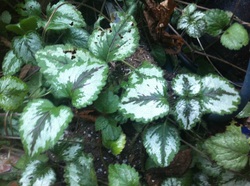 Yellow Archdevil would be a better name. This species is a aggressive weed at Leaning Oaks having escaped from the garden a number of years ago, and despite a steady effort to control it still manages to persist. Lamium galeobdolon is a herbaceous vine that has the ability to root from small pieces dropped from the weed pile or nodes on stems and grow from seed. There is no doubt that the form most often seen has an attractive variegated leaf, but its ability to spread into the wild makes it a decidedly undesirable plant. In shady areas is able to out compete many native plants, and can form thick mats that cover large areas. This is a species that is often spread by people dumping garden waste at the side of a road or the edge of a park. For more information about invasive species in B.C. visit: http://www.bcinvasives.ca/invasive-species/invasive-species |
AuthorsTwo biologists on a beautiful property armed with cameras, smart phones and a marginal knowledge of websites took up the challenge of documenting one species a day on that property. Join along! Posts and photographs by Leah Ramsay and David Fraser (unless otherwise stated); started January 1, 2014. Categories
All
Archives
January 2025
|
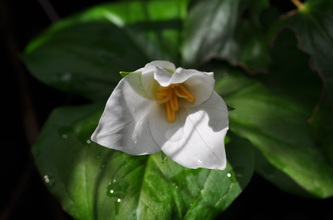
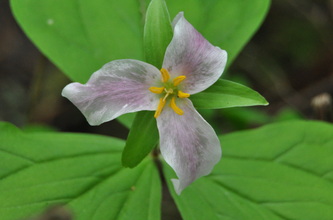
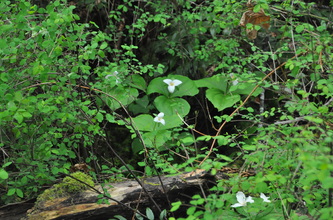
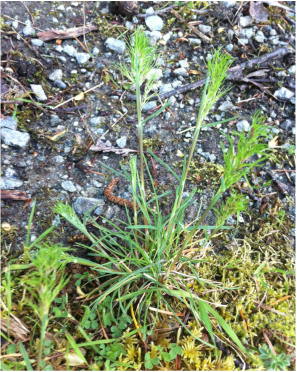
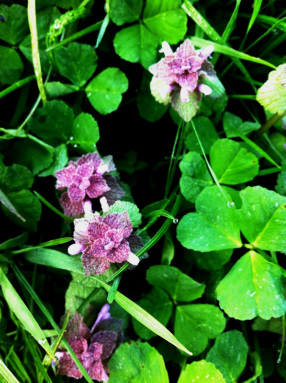
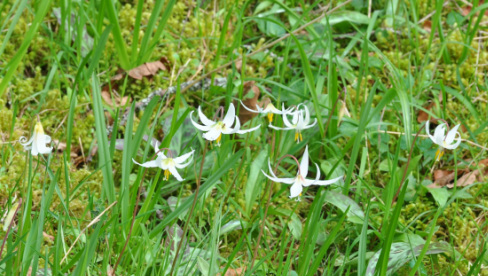
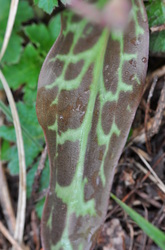
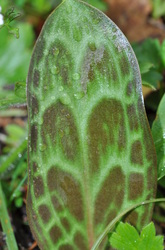
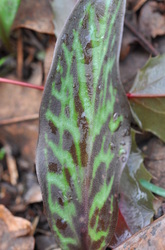
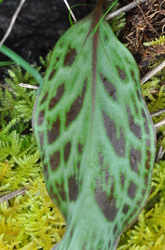
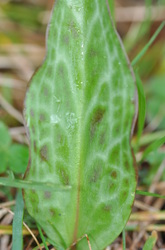
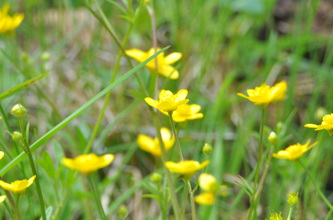
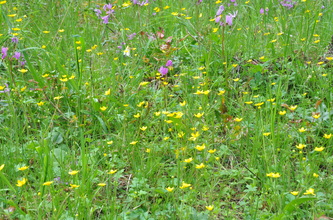
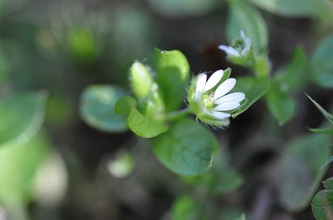
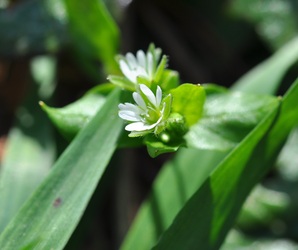
 RSS Feed
RSS Feed